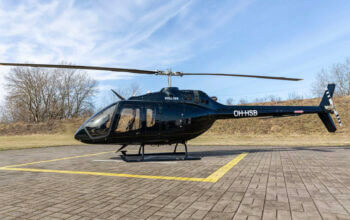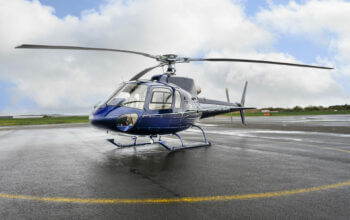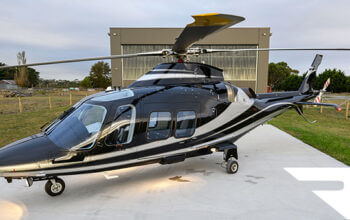Estimated reading time 14 minutes, 7 seconds.
Air Canada has reported adjusted net income of $365 million or $1.29 per diluted share in the third quarter of 2013 compared to adjusted net income of $229 million or $0.82 per diluted share in the third quarter of 2012, an increase of 59.4 per cent. Third quarter 2013 EBITDAR amounted to $626 million compared to EBITDAR (excluding benefit plan amendments) of $551 million in the third quarter of 2012, an increase of $75 million. On a GAAP basis (which includes special items), Air Canada’s net income was $299 million or $1.05 per diluted share compared to net income of $359 million or $1.28 per diluted share in the same quarter of the previous year, during which Air Canada recorded a special operating expense reduction of $127 million in Benefit plan amendments relating to changes to the retirement age under one of its collective agreements. No comparable operating expense reduction was recorded in the third quarter of 2013.
“I am extremely pleased to report Air Canada’s best quarterly performance in the Corporation’s history, surpassing previous records for adjusted net income and EBITDAR,” said Calin Rovinescu, president and chief executive officer. “Our operating leverage for the quarter was significant, as we achieved a 59.4 per cent improvement in adjusted net income based on increased total revenues of 4.6 per cent for the quarter. These results underscore the momentum that has been achieved in executing on the foundations of our transformation strategy – sustainable profitability and positioning Air Canada as a stronger national and global competitor.
“In the quarter, we announced a series of significant developments in achieving our priorities: We successfully completed the $1.4 billion refinancing of our 2010 notes, significantly lowering our cost structure, strengthening our balance sheet and improving our credit profile. We completed the transfer of all 15 Embraer 175 aircraft to Sky Regional, our Air Canada Express partner, an important step in Air Canada’s regional diversification strategy and our ongoing cost transformation program. We finished construction of a new state-of-the-art Operations Centre that is designed to significantly improve operational capabilities and efficiencies of our global network. To further develop Toronto Pearson as a truly global hub and even stronger North American gateway, we recently concluded an enhanced cooperation agreement with the Greater Toronto Airports Authority (GTAA). In addition, we implemented an expanded commercial agreement with Air China, to serve additional points in China on a codeshare basis with our Star Alliance partner.
“I am particularly pleased to see the stock market’s endorsement of the strategy that our team has developed. This was reflected in our stock price more than tripling over the past year. Moreover, our commitment as a progressive employer and investment in the well-being of our employees has also been recognized with the recent naming of Air Canada as one of Canada’s Top 100 Employers.
“Looking ahead, we will take delivery of the final three of five new Boeing 777-300ER aircraft by February 2014, and we are actively preparing to begin integrating the first six of 37 Boeing 787 aircraft into our widebody fleet in 2014. For the summer of 2014, we announced a major European expansion as these new widebody aircraft enter Air Canada’s international fleet allowing for the transfer of current aircraft to Air Canada rouge in order to operate in leisure markets on a more cost competitive basis.
“Our operational performance has also shown continued improvement. On-Time Performance (OTP) for the quarter improved over 20 percentage points compared to the previous year, the third consecutive quarter of significant year-over-year gains. I would like to thank our employees for their on-going focus on taking care of our customers while operating a safe and efficient airline. Their professionalism, collaboration and dedication, combined with Air Canada’s award-winning product has once again been recognized by this year’s Ipsos Reid Business Traveller Survey, released in September, that confirmed that Canada’s frequent business travellers recognize Air Canada as their preferred airline by a growing margin – the widest margin versus our domestic competitors since 2008,” concluded Mr. Rovinescu.
Third Quarter Income Statement Highlights
Third quarter 2013 system passenger revenues were $3,177 million, an increase of $148 million or 4.9 per cent over the third quarter of 2012, on a 2.9 per cent growth in traffic and a 2.0 per cent improvement in yield. Passenger revenue per available seat mile (RASM) increased 1.8 per cent from the third quarter of 2012 on the yield growth. Air Canada reported a passenger load factor of 86.2 per cent for the third quarter of 2013, 0.1 percentage points below the third quarter 2012 record load factor. In the premium class cabin, passenger revenues increased $12 million or 2.1 per cent on yield growth of 3.8 per cent as traffic declined 1.7 per cent from the third quarter of 2012.
Operating expenses increased $160 million or 6 per cent from the third quarter of 2012. As a result of changes to the terms of the ACPA collective agreement related to retirement age, which are not subject to regulatory approval, Air Canada recorded an operating expense reduction of $127 million in Benefit plan amendments in the third quarter of 2012 related to the impact of those amendments on pension and other employee benefit liabilities. No such operating expense reduction was recorded in the third quarter of 2013.
Air Canada’s adjusted cost per available seat mile (adjusted CASM), which excludes fuel expense, the cost of ground packages at Air Canada Vacations and unusual items, decreased 3.4 per cent compared to the third quarter of 2012. The 3.4 per cent reduction in adjusted CASM was in line with the adjusted CASM decrease of 3.0 per cent to 3.5 per cent projected in Air Canada’s news release dated Oct. 3, 2013.
In the third quarter 2013, Air Canada recorded operating income of $416 million compared to operating income of $423 million in the same quarter in 2012. As discussed above, an operating expense reduction of $127 million was recorded in Benefit plan amendments in the third quarter of 2012 while no such operating expense reduction was recorded in the third quarter of 2013.
Financial and Capital Management Highlights
At Sept. 30, 2013, unrestricted liquidity (cash, short-term investments and undrawn lines of credit) improved to $2,412 million or 20 per cent of 12-month trailing revenues (Sept. 30, 2012 – $2,135 million or 18 per cent of 12-month trailing revenues).
Adjusted net debt amounted to $4,104 million at Sept. 30, 2013, a decrease of $33 million from Dec. 31, 2012. Despite adding US$285 million of debt related to the two Boeing 777-300ER aircraft delivered in June and August 2013, Air Canada was able to reduce net debt by maintaining positive cash from operations.
In the third quarter of 2013, negative free cash flow of $249 million declined $96 million from the third quarter of 2012, largely due to the addition of one Boeing 777 aircraft, partly offset by an increase in cash flows from operating activities due to better operating results.
For the 12 months ended Sept. 30, 2013, return on invested capital (“ROIC”) was 10.8 per cent versus 7.7 per cent at Dec. 31, 2012. Air Canada has targeted achieving an ROIC of 10 to 13 per cent by 2015.
Current Outlook
For the fourth quarter of 2013, Air Canada expects its system ASM capacity, as measured by available seat miles (ASMs), to increase in the range of 3.0 to 4.0 per cent when compared to the fourth quarter of 2012.
Air Canada expects its full year 2013 system ASM capacity and domestic ASM capacity to increase in the range of 2.0 to 2.5 per cent when compared to the same periods in 2012 (as opposed to the increase of 1.5 to 2.5 per cent disclosed in Air Canada’s news release dated October 3, 2013).
For the fourth quarter of 2013, Air Canada expects adjusted CASM to decrease 2.0 to 3.0 per cent when compared to the fourth quarter of 2012.
For the full year 2013, Air Canada continues to expect adjusted CASM to decrease in the range of 1.5 to 2.0 per cent from the full year 2012, consistent with the revised outlook provided with the Oct. 3, 2013 traffic release.
Air Canada continues to expect its full year 2014 system capacity to increase by 9.0 to 11.0 per cent when compared to the full year 2013. This projected increase in capacity, which is being deployed primarily on international markets, is consistent with the fleet plan discussed in Air Canada’s Third Quarter 2013 MD&A. The projected capacity increase is due to the addition of five high-density Boeing 777-300ER aircraft (the first two having been delivered in June and August 2013, respectively, and the remaining three scheduled for delivery between November 2013 and February 2014), the scheduled arrival in 2014 of the first six Boeing 787 aircraft, and the planned growth from Air Canada rouge.
Air Canada’s outlook assumes Canadian GDP growth of 1.25 to 1.75 per cent for 2013 and Canadian GDP growth of 2.0 to 3.0 per cent for 2014.
Air Canada also expects that the Canadian dollar will trade, on average, at C$1.03 per U.S. dollar for the fourth quarter of 2013 and the full year 2013 and that the price of jet fuel will average 89 cents per litre for the fourth quarter of 2013 and the full year 2013.
For the full year 2013, Air Canada continues to expect:
-Depreciation, amortization and impairment expense to decrease by $115 million from the full year 2012.
-Employee benefits expense to increase by $70 million from the full year 2012.
-Aircraft maintenance expense to decrease by $40 million from the full year 2012 level, which includes a favourable maintenance return provision adjustment of $32 million in the fourth quarter of 2012.
Non-GAAP Measures
Below is a description of certain non-GAAP measures used by Air Canada to provide additional information on its financial and operating performance. Such measures are not recognized measures for financial statement presentation under Canadian GAAP and do not have standardized meanings and may not be comparable to similar measures presented by other public companies. Refer to Air Canada’s Third Quarter 2013 MD&A for reconciliation of non-GAAP financial measures.
-Adjusted net income (loss) and adjusted net income (loss) per diluted share are used by Air Canada to assess its performance without the effects of foreign exchange, net financing expense on employee benefits, mark-to-market adjustments on derivatives and other financial instruments recorded at fair value and unusual items.
-EBITDAR is commonly used in the airline industry and is used by Air Canada to assess earnings before interest, taxes, depreciation, amortization, impairment and aircraft rent as these costs can vary significantly among airlines due to differences in the way airlines finance their aircraft and other assets.
-Adjusted CASM is used by Air Canada to assess the operating performance of its ongoing airline business without the effects of fuel expense, the cost of ground packages at Air Canada Vacations and unusual items, such as impairment charges and benefit plan amendments, as such expenses may distort the analysis of certain business trends and render comparative analyses to other airlines less meaningful.
-Free cash flow is used by Air Canada as an indicator of the financial strength and performance of its business because it shows how much cash is available for such purposes as repaying debt, meeting ongoing financial obligations and reinvesting in Air Canada.
-Adjusted net debt is a key component of the capital managed by Air Canada and provides a measure of the airline’s net indebtedness. Adjusted net debt is calculated as the sum of total long-term debt and finance lease obligations and capitalized operating leases less cash and cash equivalents and short-term investments.
-Return on invested capital is used by Air Canada to assess the efficiency with which it allocates its capital to generate returns. Return is based on Adjusted net income (loss) (as discussed in the section above), excluding interest expense and implicit interest on operating leases. Invested capital includes average long-term debt, average finance lease obligations, the value of capitalized operating leases (calculated by multiplying annualized aircraft rent expense by 7) and the market capitalization of Air Canada’s outstanding shares.
Notice a spelling mistake or typo?
Click on the button below to send an email to our team and we will get to it as soon as possible.
Report an error or typoHave a story idea you would like to suggest?
Click on the button below to send an email to our team and we will get to it as soon as possible.
Suggest a story







